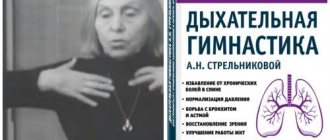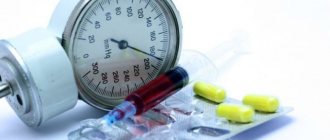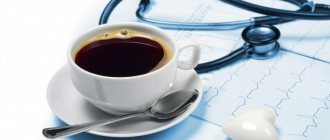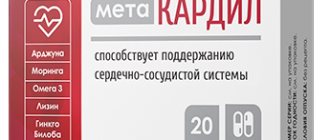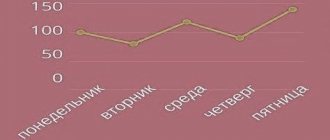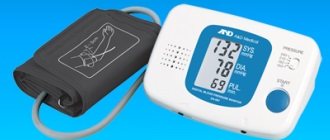Content:
- Why is hypertension dangerous?
- High blood pressure: causes
- Secondary hypertension
- Why does high blood pressure occur in a child?
- Brief conclusions
Hypertension is a leading risk factor for cardiovascular and cerebrovascular disorders. It is characterized by a persistent increase in blood pressure to 140/90 or more. It can occur at any age, but is more often diagnosed after 35-40 years. Found in 40% of people in the older age group. Of these, 58% are men, 42% of patients are women.
About improving performance
It has been established that normal tonometer readings in a healthy person should correspond to the range of 110/120-70/60 mmHg. Art., however, for some people these values may be high or low, and any deviation (increase or decrease in tonometer readings) from the usual norm will be manifested by a deterioration in well-being.
For example: if a person’s usual blood pressure value was 140/50, and he felt well, then the increase in pressure in this case will be considered from 150/60 (and the previous values will be absolutely normal, despite the deviation), and will begin to cause corresponding symptoms : fainting, dizziness, general physical weakness. This factor has its own medical terminology – adaptation pressure.
Such a person should still constantly use a blood pressure monitor and undergo regular examinations by a cardiologist, because hypertension can occur in a latent form and provoke sudden complications.
Heart disease (particularly hypertension) is very complex and unpredictable. The height of pressure affects each person differently, because everyone has their own adaptive hypertension, and if it deviates even by 10 mm Hg. pillar, there is a risk of death. Consequently, the earlier treatment for hypertension begins, the more favorable the prognosis of the disease will be.
Why is hypertension dangerous?
High blood pressure significantly increases the load on the cardiovascular system. The risk of cerebral vascular rupture increases, which is accompanied by hemorrhagic stroke. The disease also contributes to the formation of atherosclerotic plaques and intravascular blood clots, which ultimately causes myocardial infarction, trophic disorders in tissues, and cerebral ischemia.
Episodic high blood pressure, the causes of which are external influences (physical activity, stress), is less dangerous. However, against the background of existing atherosclerosis, it can become a factor in the development of vascular embolism. In addition, there is a risk of damage to the wall of the cerebral arteries with the formation of a cerebral hematoma. Frequent or constant increase in blood pressure leads to the development of secondary wrinkled kidney, left ventricular hypertrophy, and heart failure.
Body trembling - tremor
A common symptom of high blood pressure is trembling of the hands, legs and body in general. Doctors call it tremor. It resembles trembling and body aches during chills, which occurs with high fever. In 85% of women with a hypertensive crisis with very high blood pressure, their arms and legs begin to tremble. With moderate hypertension, trembling may also appear if a woman does not take measures to lower it within several hours. This will lead to a rapid depletion of energy in the muscles and will manifest itself as a simultaneous increase in weakness and tremors.
The extreme degree of involuntary muscle contractions and tremors are cramps. Usually, when they occur, the woman loses consciousness, rolls her eyes, clenches her jaw tightly, the muscles of the whole body become sharply tense, and her arms and legs twitch synchronously.
Convulsive syndrome is a serious complication of a hypertensive crisis, indicating a high probability of stroke.
High blood pressure: causes
The hemodynamic basis of the disease is an increase in the tone of the arteries and arterioles. The causes of high blood pressure in women and men with primary hypertension do not differ. It occurs under the influence of two groups of factors:
- Neurogenic
. There is hyperactivation of the sympathetic nervous system, which is responsible for regulating vascular tone.
- Humoral
. The tension of the vascular wall changes under the influence of catecholamines and other biologically active substances.
On a note:
The underlying causes of hypertension are not fully understood. It remains unknown what causes increased activity of the SNS and the release of vasoconstrictor hormones. Existing treatment is not aimed at eliminating the main etiological factor, but at relieving emerging symptoms.
High blood pressure often occurs in the morning. The reason for this is the physiological hyperactivation of the renin-angiotensin system and the cessation of the influence of antihypertensive drugs taken by the patient in the evening. To prevent such phenomena, an increased dose of ACE inhibitors is prescribed.
Causes of surges in high blood pressure followed by its reduction without drug intervention: mental tension, stress, fatigue, physical activity, hyperthermia, intake of vasoconstrictors (coffee, tea, energy drinks). These forms of hypertension occur in young people. The causes of high blood pressure in men are often smoking and alcohol abuse.
Secondary hypertension
Hypertension that occurs against the background of other somatic diseases is considered secondary. The following forms of VG exist:
- renal
: occurs with pyelonephritis, glomerulonephritis, diabetic nephropathy, amyloidosis, tuberculosis, tumors, injuries, congenital kidney anomalies;
- Vasorenal
: the cause of high blood pressure is damage to the renal vessels, in particular atherosclerosis, aneurysm, fibromuscular dysplasia;
- endocrine
: hypo- and hyperthyroidism, pheochromocytoma, adrenal hyperplasia, Itsenko-Cushing's disease;
- centrogenic
: brain tumors, encephalitis, stroke, porphyria, intoxication with heavy metal salts;
- medicinal
: blood pressure increases when taking corticosteroid hormones, sympathomimetics, cyclosporines, monoamine oxidase inhibitors.
The causes of elevated lower pressure (isolated diastolic hypertension) are predominantly renal. The pathology occurs at a young age and is difficult to correct. The isolated systolic form of the disease is more often diagnosed in women over 60 years of age. It is caused by a decrease in the elasticity of the vascular wall of the aorta.
Why does high blood pressure occur in a child?
Blood pressure levels in children are more strongly associated with the influence of the central nervous system than in adults. Therefore, hypertension often develops under the influence of psycho-emotional stress. Also, the disease can be of an essential (primary) nature or be somatic, caused by other pathological processes.
On a note
: When measuring blood pressure, a physician should take into account the possibility of “white coat hypertension” (an increase in blood pressure due to anxiety provoked by the presence of a doctor).
Arterial hypertension, the causes of which are discussed above, requires a thorough examination. In secondary types of pathology, complete recovery is possible after correction of the underlying process. Essential hypertension is considered incurable. Continuous drug reduction of blood pressure is used. If therapy is refused, the patient's life expectancy is significantly reduced.
Diagnostics
The main sign of hypertension is a stable increase in blood pressure, detected in at least three measurements on different days in a calm environment. When measuring blood pressure for the first time in a hospital or clinic, to ensure the correctness of the results obtained, it is important to follow the following rules:
- Before the examination, the patient needs to sit for a few minutes in a quiet room to calm down;
- the size of the tonometer cuff must correspond to the thickness of the arm, and the device itself must be mounted at the level of the heart;
- two measurements are performed with an interval of 1-2 minutes on each hand; if there is a large difference in the obtained figures, an additional measurement is taken;
- in elderly patients, as well as people suffering from diabetes mellitus, or if a decrease in blood pressure is suspected in case of a change in body position, measurements are taken in the first and fifth minutes in a standing position;
- Additionally, heart rate is measured for 30 seconds.
The doctor, in a conversation with the patient, clarifies at what age the pressure first began to increase, whether there are any symptoms such as snoring with pauses in breathing during sleep, attacks of muscle weakness or sudden heartbeat with sweating and headache, and unusual impurities in the urine.
It is also important to find out what medications and dietary supplements he is taking. As part of the first stage of examination for hypertension, the following tests are performed:
- clinical blood test;
- general urine analysis, detection of microalbumin in its single and daily portions;
- biochemical blood test (cholesterol, lipoprotein levels to assess the risk of atherosclerosis, blood electrolytes - potassium, sodium, chlorine, calcium, as well as glucose and creatinine);
- determination of the level of glycated hemoglobin;
- determination of the concentration of hormones - thyroxine, triiodothyronine and thyroid-stimulating hormone, antibodies to thyroid peroxidase and thyroglobulin, aldosterone.
If a hereditary predisposition to the disease is suspected, it is possible to determine polymorphisms of genes associated with the development of arterial hypertension.
In order to clarify risk factors for the development and identify existing cardiovascular pathologies in hypertension, instrumental diagnostic methods are used:
- 24-hour blood pressure monitoring;
- electrocardiographic study;
- echocardiography;
- 24-hour Holter monitoring;
- duplex scanning of the brachiocephalic, renal or iliofemoral arteries;
- ultrasound examination of the kidneys and adrenal glands;
- fundus examination.
For hypertension, it is important to monitor blood pressure at home by keeping a diary, in which it is necessary to record all the results of measurements over time, medications taken and episodes of stress that can provoke a rise in blood pressure. In this case, measurements must be taken in a sitting position, after several minutes of rest, keeping your hand at the same level as your heart.
Brief conclusions
- The causes of high blood pressure can be either humoral (tension of the vascular walls under the influence of biologically active substances) or neurogenic (hyperactivation of the sympathetic nervous system).
- Blood pressure can rise due to a number of factors, such as stress, tension, overwork, and physical activity.
- High blood pressure can also be caused by a specific disease (example: kidney disease, brain tumors, hypo- and hyperthyroidism, taking corticosteroid hormones).
- In children, high blood pressure often develops under the influence of psycho-emotional stress.
Palpitations, arrhythmia
The main target organs suffering from increased pressure are the brain and heart. Therefore, hypertension often manifests itself as symptoms of their damage. If in relation to the brain it is headache, dizziness and vomiting, then in relation to the heart:
- Palpitations.
- Frequent pulse.
- Interruptions and irregularity of rhythm (arrhythmia).
About 70% of women with high blood pressure report signs of arrhythmia. More often, complaints occur as an attack and are described as a feeling of one’s own heartbeat (as if the heart is jumping out of the chest). A healthy person should not feel his heart contracting, but during a hypertensive crisis this feeling is present.
If you count the pulse at this time, it turns out that it exceeds 90 beats/min, and may be irregular or intermittent with different intervals between successive contractions (beats). If you have heart problems, severe interruptions are possible - atrial fibrillation, paroxysmal tachycardia, extrasystole, atrial and ventricular fibrillation.
